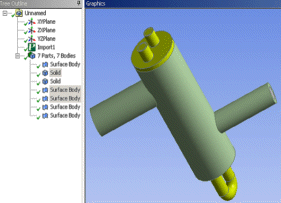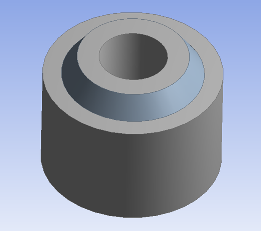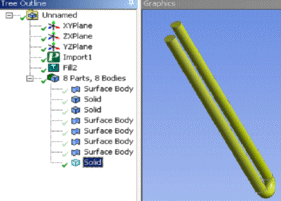This method is used to extract inverse volumes enclosed by one or more bodies in a model. For example, if you want to do a CFD analysis of the heat exchanger on a tube side as shown in the image below, you can create the geometry that represents the fluid by using this method. First cap the inlet and outlet of the tube by creating Surface bodies. Then select the Solid bodies that represent the tube. On generate, a frozen body will be created that represents the inverse volume.
You can select multiple bodies which encloses the void regions. You can also pick Solid and/or Surface bodies. This method can fill multiple void regions in selected bodies.
Preserve Capping Bodies: You can delete the Surface bodies used for capping inlets and outlets by setting the "Preserve Capping Bodies" property to No.
Preserve Solids: You can also delete the solid bodies by setting the "Preserve Solids" properties to No. The selected solid bodies or all solid bodies in the model will be deleted based on the "Target Bodies" property value.
Note: When either of the Preserve option is set to No, the respective bodies will be deleted only if they are used in the construction of the inverse volume.
How to use this Method
Create a Fill feature from the Tools Menu.
Click on the Extraction Type property in the Details View and select the By Caps option.
Select bodies in the model by setting the Target Bodies property to the Selected Bodies option in the Details View. By default the Target Bodies option is set to All Bodies.

Note: Not in all cases are holes easily capped by creating surface bodies from the edge loops. Sometimes it may help to create a Skin/Loft to cover the hole instead, particularly if the hole is a gap between multiple disjoint loops, as in the picture below.

Set the appropriate value (No or Yes) of the Preserve Capping Bodies property and Preserve Solids property in the Details View.
Click Generate to complete the feature creation.
In the image below the tube side inverse volume is extracted by selecting a tube and two Surface bodies capping its two openings.



